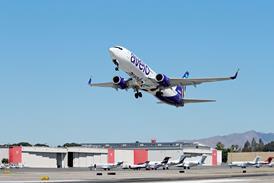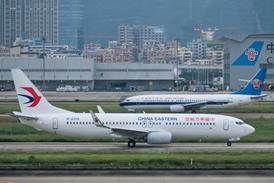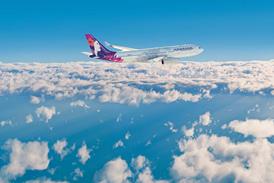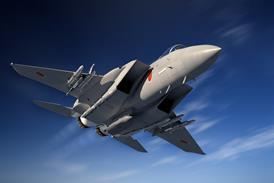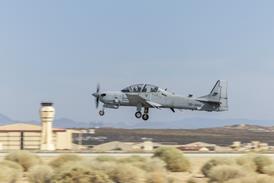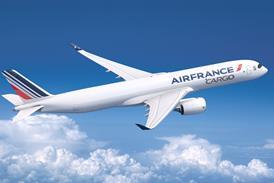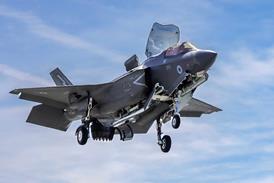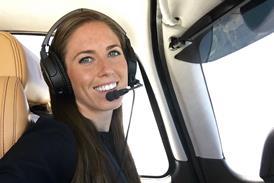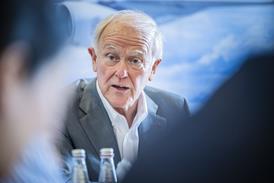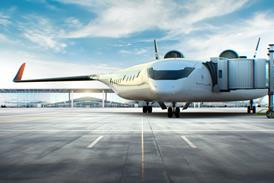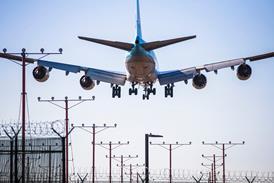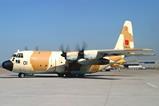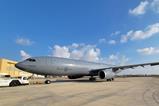Rotorcraft manufacturer Leonardo is seeking a partner to offer its TH-73 Thrasher training helicopter to the US Army under the service’s Flight School Next contract.
Envisioned as a complete transformation of the army’s rotary-wing aviator training programme, the contract is expected to pay some $1.5 billion yearly to a services provider for a full-service instructional plan, to include both aircraft and education.
Up to 1,500 student aviators annually are to receive flight training under the new curriculum.
A crowded field has emerged to vie for the lucrative Flight School Next deal, with interested parties pursuing a range of strategies, some tied to particular aircraft and others taking an agnostic approach.
Leonardo’s strategy is to partner with an as-yet unidentified training services provider that would use TH-73s as primary training aircraft.
A derivative of the AW119k light-single, the TH-73 is the primary training helicopter for the US Navy (USN), which also provides basic rotary-wing flight instruction to the US Marine Corps (USMC) and US Coast Guard.
The navy selected the TH-73 in 2020, with a planned fleet of 130 aircraft nearly complete.
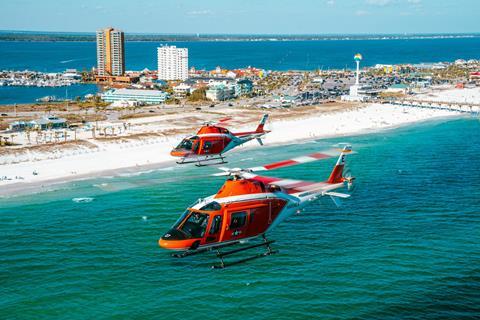
Former USMC aviator Andrew Gappy led Leonardo’s campaign to secure the USN trainer contract. Now the company’s vice-president of government affairs, he says the navy’s experience with the TH-73 proves the light-single can accomplish the army’s goals of reducing operating costs and improving the skills of new pilots.
“We’re doing all of those things right now for the navy,” he notes. “Everything that they’re asking for is already being accomplished.”
While cost reduction is a significant concern for the army, the service is fully sounding the alarm on the basic airmanship skills of its pilots since the fielding of the Airbus Helicopters UH-72A Lakota as a training platform in 2016.
“They’re great system operators, but they don’t know how to fly the aircraft,” Major General Clair Gill, the US Army’s senior aviation officer, said at the annual Army Aviation Association of America conference in May.
The Lakota has been the army’s primary trainer since 2020, and since then service leaders say there has been an uptick in serious safety incidents.
“I think it all comes down to the aircraft,” says John Boam, a former US Army aviator and Leonardo’s director of army programmes.
While both Boam and Gappy say the H145-based Lakota excels as an operational helicopter, they echo critiques made by army’s own generals: the twin-engined UH-72 is overly complex and features too much automation to be an ideal trainer.
“We took a very sophisticated aircraft that almost flies itself and used that to train basic pilot skills,” army vice chief of staff General James Mingus told FlightGlobal in May.
Specific skills that have suffered under the army’s current flight training structure include basic stick-and-rudder manual flying and full touch-down autorotation emergency drills.
“It’s not made for training young professional aviators,” Boam says.
With the Lakota, autorotation drills either end without touching the ground or must be conducted in a simulator, owing to the dual-engine nature of the UH-72. For that reason, army leaders say they want the next trainer to be a single-engined model.
In contrast to the Lakota, Leonardo says the TH-73 has already completed 37,000 autorotations to the ground under the USN trainer programme. The Thrasher is also IFR-certificated and compatible with night-vision goggles.
Not only does the TH-73 fulfill those basic criteria, according to Leonardo, but the army will be able to get the aircraft at a bargain.
“They can leverage off of all the risk that the navy’s bought down over the last four years,” Gappy says. “The more services you have flying that same aircraft, the cheaper it is for the taxpayer, the cheaper it is for the services.”
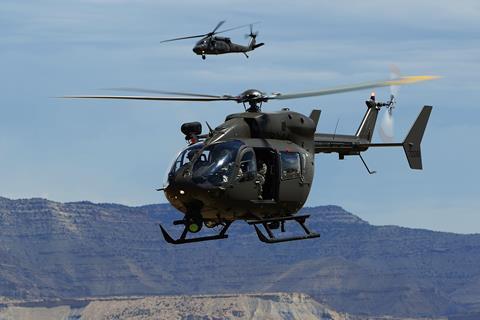
While the army has not yet issued formal requirements for the Flight School Next contract, the service has notably left open the possibility the aircraft will be contractor-owned-and-sustained, rather than the traditional approach of a government-owned-and-operated fleet.
This would leave key details, including fleet size and composition, up to the bidders. The service plans to issue a formal commercial solutions solicitation by September.
A draft version of that document released on 10 July indicates the army will close bidding on Flight School Next at the end of October.
Well before then, Leonardo will have to settle on a partner to develop a training curriculum around the TH-73.
While the manufacturer would be heavily involved in the sustainment of a new fleet, Boam says it does not make sense for Leonardo to be the prime contractor for what is primarily a training services programme, including classroom and cockpit instruction and simulator requirements.
“It can’t be an aircraft manufacturer who has no experience in managing something like that,” he notes.
Robinson is taking a similar approach, partnering with training services provider Mission First (alternatively known as M1) to offer the R66 to the army. Bell is also teaming with four aviation service providers for classroom, simulator and cockpit instruction on its Flight School Next bid, based around the company’s 505 light-single.
While partner selection is still “pre-decisional” for Leonardo, Gappy says several large defence firms have reached out regarding the possibility of offering the TH-73 to the US Army.
One likely candidate is Lockheed Martin, which told FlightGlobal in May it plans to submit a “platform agnostic” proposal featuring a third-party aircraft.
Eric Carney, Lockheed’s director of strategy and business development for air and commercial solutions, tells FlightGlobal this will allow the company to craft the best overall solution in terms of cost and outcomes for pilot trainees.
Other competitors for the Flight School Next deal include MD Helicopters, which plans to offer the MD 530F, and Airbus. That manufacturer says the army could achieve its aims by keeping the Lakota, but pair the type with a modern training programme to address the concerns about pilot performance.
Airbus cites the UH-72’s sterling safety record, with no fatal accidents over five years and 675,000 flight hours as the army’s primary trainer aircraft, as supporting evidence for keeping the twin-engined type.


